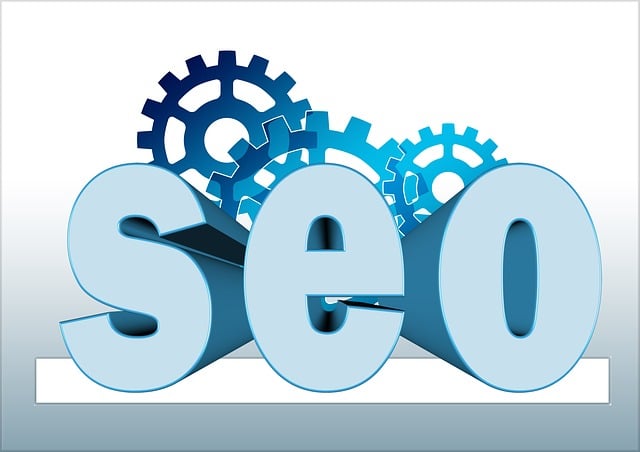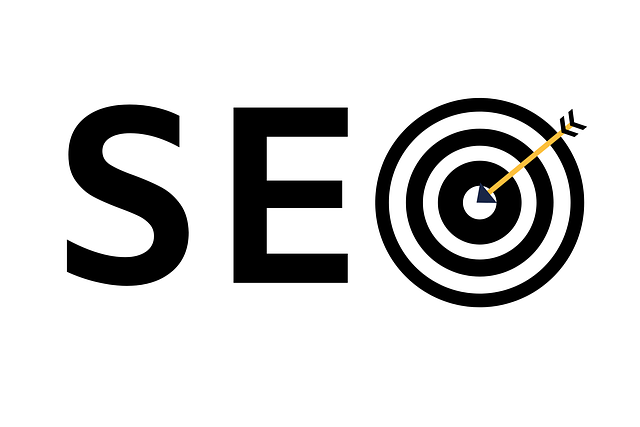Small businesses can thrive in a competitive digital landscape by leveraging Cost-effective SEO marketing, which focuses on website optimization and content strategy to improve search engine rankings without high costs. This approach offers numerous advantages, including increased visibility, long-term value, higher ROI compared to traditional advertising, and the potential to compete with larger brands.
SEO enhances online presence, credibility, and customer attraction over time, driving brand authority, better user experiences, and higher conversion rates. By strategically planning and implementing keyword research, high-quality content creation, on-page optimization, link building, local SEO, and continuous measurement of key performance indicators (KPIs), businesses can achieve sustainable growth. Staying adaptable to search engine algorithm updates is vital for maximizing the benefits of Search Engine Optimization.
In today’s digital landscape, Cost-Effective SEO Marketing is a game-changer for small businesses aiming for long-term success. This article delves into a comprehensive strategy that maximizes the benefits of search engine optimization (SEO), even with limited resources. From understanding the power of organic search to implementing targeted keyword research and on-page optimization techniques, each section explores effective ways to boost online visibility, drive traffic, and achieve measurable results. Discover how local SEO and staying ahead of algorithm updates can solidify your business’s digital footprint.
Understanding Cost-Effective SEO Marketing: A Strategy for Small Businesses

Small businesses often face unique challenges when it comes to marketing, especially in a competitive digital landscape. Cost-effective SEO marketing emerges as a powerful strategy to bridge this gap and compete with larger brands. This approach focuses on optimizing websites and online content to improve search engine rankings without breaking the bank. By leveraging SEO, small businesses can harness the power of organic search results, which drive highly targeted traffic at minimal cost.
The benefits are multifaceted: it increases visibility by enhancing a website’s search engine positioning, thereby attracting more potential customers; it provides long-term value through sustainable online growth; and it offers a higher return on investment compared to traditional advertising methods. With careful planning and implementation, small businesses can effectively utilize SEO keywords and content strategies to build a solid online presence, compete with competitors, and ultimately drive sales.
The Power of Organic Search: Why It Matters for Long-Term Success

In today’s digital landscape, the power of organic search cannot be overstated. It is a cost-effective strategy that delivers measurable results over time. By focusing on Search Engine Optimization (SEO), businesses can increase their online visibility and attract potential customers organically. The benefits of SEO are multifaceted; it helps build credibility, enhances brand authority, and drives targeted traffic to websites. When search engines like Google rank sites higher, it translates into increased organic reach, leading to more website visits and improved customer engagement.
Unlike paid advertising that requires continuous investment, organic search provides long-term value. It builds a solid foundation for online presence by optimizing web content, improving site speed, and creating high-quality backlinks. These efforts contribute to better user experiences, encouraging visitors to stay longer and explore more pages. As a result, businesses reap the advantages of higher conversion rates and stronger customer retention, ensuring sustained growth and success in their respective industries.
Unlocking the Benefits: How SEO Boosts Online Visibility and Traffic

Search Engine Optimization (SEO) is a powerful tool that unlocks numerous benefits for businesses aiming to thrive online. By understanding and implementing effective SEO strategies, companies can significantly boost their online visibility and attract more targeted traffic. The key lies in optimizing websites for search engines like Google, which subsequently increases their rankings on search result pages (SERPs). Higher rankings mean increased exposure, as users are more likely to click on the top results, often considering them the most relevant and trustworthy sources.
This process involves a range of techniques, from keyword research and high-quality content creation to link building and technical optimizations. By aligning your online content with user search intent, SEO ensures that potential customers find your business when they are actively searching for products or services you offer. As a result, businesses can connect with their target audience, drive more qualified leads, and ultimately increase conversions, all while enjoying a cost-effective marketing approach.
Targeted Keyword Research: Finding the Right Terms for Your Business

Effective keyword research is a cornerstone of successful SEO marketing, enabling businesses to understand their target audience’s search behavior and tailor content accordingly. By delving into tools and analyzing data, marketers can uncover valuable insights about the terms customers use when searching for products or services similar to theirs. This process involves identifying long-tail keywords, which are more specific and often less competitive, providing a strategic advantage.
The benefits of this targeted approach are manifold. It helps in ranking higher on search engine results pages (SERPs), driving organic traffic to the website. Well-researched keywords also guide content creation, ensuring that each piece of content is optimized for relevance and user intent. This strategy not only improves online visibility but also fosters a better user experience, ultimately contributing to increased conversions and business growth.
On-Page Optimization: Techniques to Enhance Website Quality and User Experience

On-Page Optimization is a crucial aspect of SEO that directly influences your website’s performance in search engine rankings. It involves enhancing various elements on your pages to improve both their quality and the overall user experience. Techniques such as keyword optimization, where strategic use of relevant keywords throughout content, meta tags, and headings improves relevance, play a significant role. Additionally, optimizing page load speeds ensures visitors don’t abandon sites due to slow performance, reflecting positively in search engine results.
User experience (UX) is another key focus area. Creating intuitive navigation, mobile-friendly designs, and well-structured content makes your site more accessible and enjoyable for users. This not only keeps visitors engaged but also encourages them to explore more pages, reducing bounce rates. Ultimately, these on-page optimizations contribute to better search engine rankings by signaling to algorithms that your website is valuable, relevant, and user-friendly—all significant factors in the benefits of Search Engine Optimization.
Building High-Quality Backlinks: Strategies for Natural Link Acquisition

Building high-quality backlinks is a cornerstone of effective SEO strategies, offering numerous benefits for search engine optimization. Natural link acquisition involves earning links from reputable and relevant sources, which signals to search engines that your content is valuable and trustworthy. This strategy differs from paid or artificial link building methods that can lead to penalties from search engines like Google.
There are several strategies to build high-quality backlinks naturally. One proven method is creating exceptional content that others want to link to. This could be in the form of comprehensive guides, original research, or insightful analyses that provide real value to readers. Engaging with influencers and industry leaders in your niche through collaborations, guest blogging, or social media interactions can also lead to natural backlinks. Additionally, reaching out to websites and bloggers in your industry to share your content or offer valuable insights can encourage them to link back to your site as a source of credibility.
Local SEO: Reaching Your Target Audience in Your Own Backyard

Local SEO is a powerful strategy for businesses focused on cost-effective marketing, aiming to attract customers within their geographical reach. By optimizing for local search results, companies can tap into a ready-made audience right in their backyard—metaphorically speaking. This approach leverages the benefits of Search Engine Optimization (SEO) to enhance visibility among nearby potential clients.
When businesses implement effective Local SEO tactics, they ensure their online presence is tailored to specific locations. This includes optimizing Google My Business listings, which plays a pivotal role in local search rankings. By claiming and regularly updating this listing, companies can control their online reputation, display accurate business information, and attract nearby customers searching for products or services relevant to their area.
Measuring Success: Key Performance Indicators (KPIs) for SEO Campaigns

Measuring success is a vital aspect of any marketing campaign, and SEO is no exception. To assess the benefits of search engine optimization (SEO), businesses should define key performance indicators (KPIs) tailored to their goals. These KPIs can range from tracking organic traffic growth and keyword rankings to analyzing click-through rates and bounce rates on website pages. By monitoring these metrics, companies gain valuable insights into what’s working and where improvements are needed.
For instance, a significant increase in organic search traffic over time indicates effective SEO strategies, leading to higher visibility and potential customers. Additionally, improving keyword rankings for target terms can boost brand authority and drive more relevant traffic. However, a high bounce rate might suggest that the content isn’t meeting user expectations, requiring a reevaluation of the approach.
Staying Ahead of the Algorithm: Adapting to Search Engine Updates

Search engine optimization (SEO) professionals must stay agile and adaptable, as search engines like Google regularly update their algorithms. These updates are designed to enhance user experience by prioritizing high-quality content and relevant search results. Staying ahead of the algorithm is crucial for maximizing the benefits of SEO, ensuring your website remains visible and ranks prominently in search results. By closely monitoring these changes and adjusting strategies accordingly, marketers can keep pace with evolving trends and maintain their online presence.
Adaptability is key; what works today might not guarantee success tomorrow. Marketers need to be proactive in understanding algorithm updates, such as shifts in ranking factors or penalties for certain practices. Regularly updating content, optimizing meta tags, and ensuring mobile responsiveness are all part of the strategy to keep up with these changes. This ongoing effort ensures that SEO tactics remain effective, providing long-term benefits like increased organic traffic, better user engagement, and improved conversion rates.
